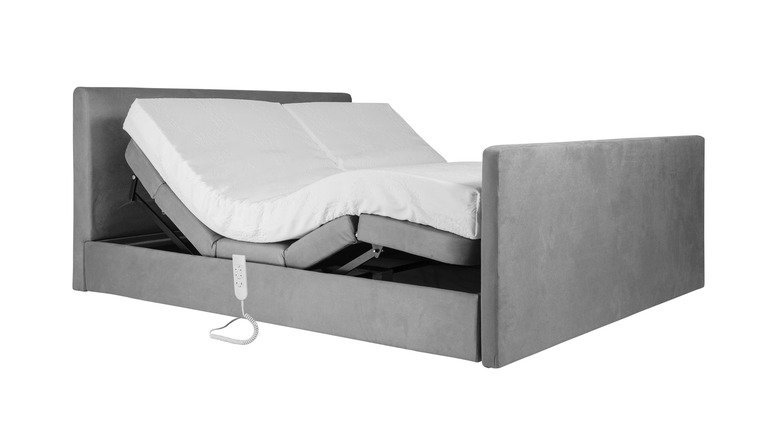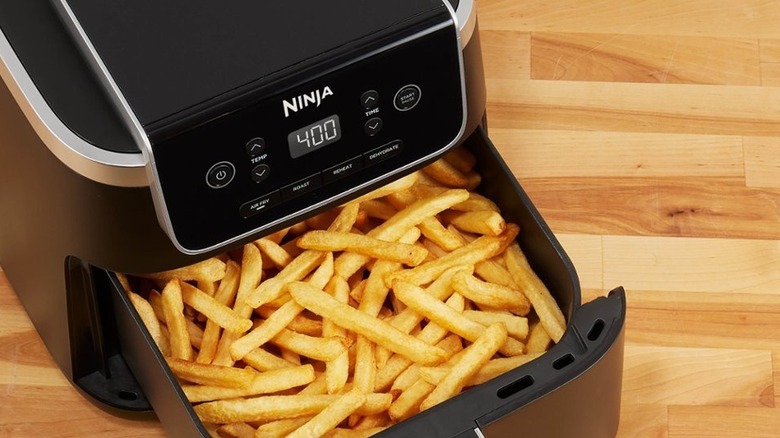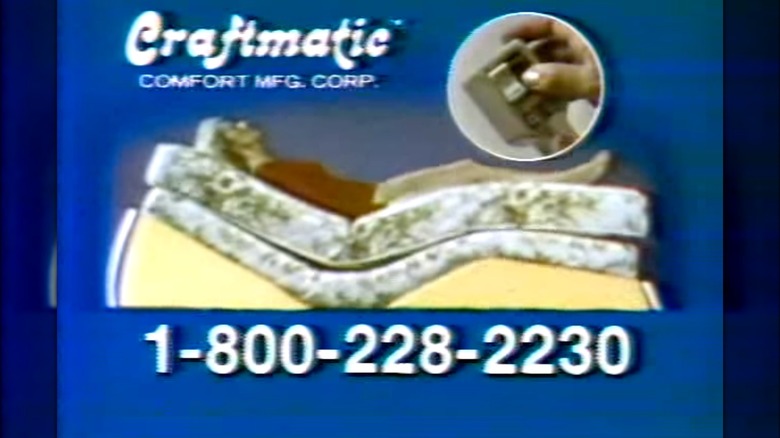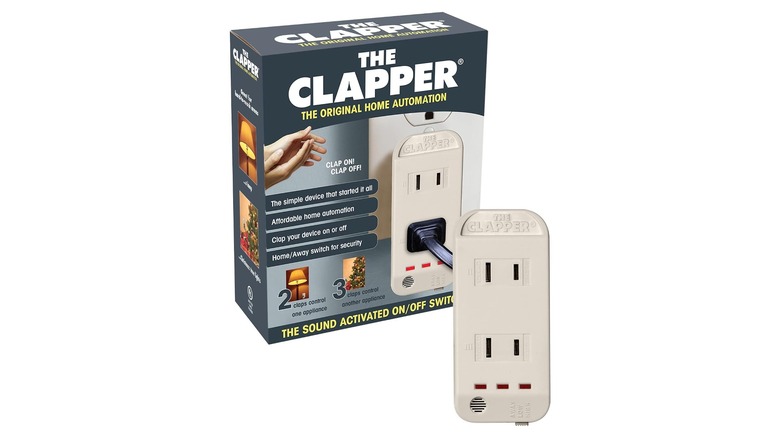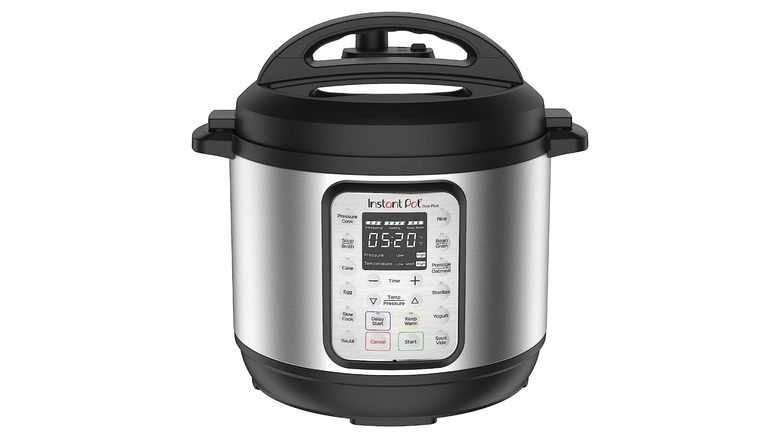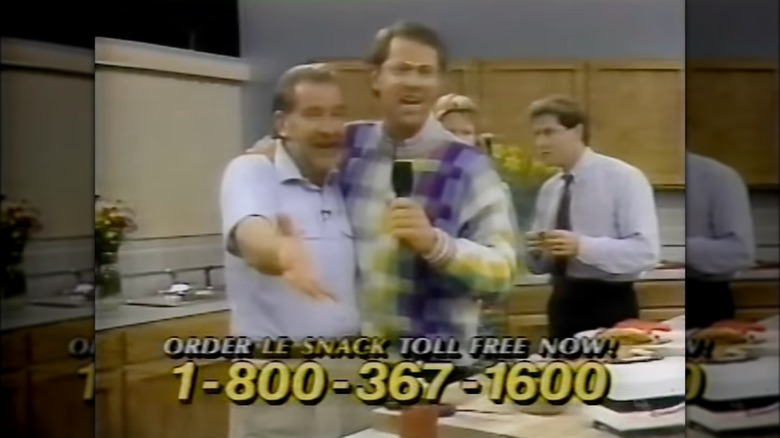5 Pieces Of Forgotten Tech That Have Been Reimagined For The Modern World
We may receive a commission on purchases made from links.
If you're of a certain age, you may have noticed something about some of the kitchen and living room gadgets that have gained popularity in recent years. A bunch of them are rooted in technology that has actually been around for decades, often showcased the kinds of TV ads that commonly aired late at night and in the early morning. Some of them have gotten a rebranding or other facelift, while others have gotten technological upgrades, and others still are merely being marketed better than they were when they were before.
Why is this happening now? The most logical explanation seems that many of these products, in their previous lives, were primarily promoted through infomercials and direct-response television commercials. A lot of these ads, especially the infomercials, came off as more than a little scammy in their aggressive salesmanship. In addition, a lot of infomercials were framed as episodes of normal TV talk shows, with Mike Levey's ongoing "Amazing Discoveries" and "Ask Mike" series of infomercials among the most memorable. Many of these products became household names merely because they starred in repeating infomercials and direct response ads, but few ever broke through to George Foreman Grill-levels of retail success.
Fast forward to today, and some of these gadgets are getting a facelift. Let's take a look at some of the examples that jump out and how they have — or, in some cases, haven't — changed since their original pitches during the infomercial boom.
Convection ovens as air fryers
When it comes to tech that has gotten a new lease on life in the modern, always-connected world, it's hard to find a more dramatic example than what we know now as air fryers. If you're a child of the 1990s who diligently watched your infomercials before school, you may remember that back in the day, there was a class of products where "air frying" was advertised as a key, but largely unexplained feature. That would be convection ovens like American Harvest's Jet Stream Oven, which cooked using a cyclone of hot air. And that's mostly what air fryers are: Rebranded convection ovens.
There are some differences, but they're minor ones. Air fryers tend to be smaller than convection ovens, which helps them heat up quickly. Whirlpool's website has a page breaking down the differences as the company views them, but pretty much all of them come down to the products billed as air fryers being smaller. (They're also comparing the air fryers to full-sized convection ovens in ranges, not the countertop kind that were infomercial fodder in the '90s.) New York Magazine argued in May 2024 that air fryers have more powerful fans and more aerodynamic designs, too. Sure. But that doesn't change that this is largely the same technology from the infomercials of 30-plus years ago, just with better marketing.
Adjustable beds
If you've shopped for a new bed in recent years, you may have noticed that a perk often offered by the big furniture and mattress store chains is a free adjustable base bundled with the mattress. If you're on the younger side, then this probably strikes you as completely mundane and normal. Adjustable beds are incredibly useful for a number of different reasons, and with the right mattress, they can be incredibly comfortable for non-sleeping tasks. If you're in your 30s or beyond, though, you probably remember a time when adjustable beds were marketed completely differently, and not aimed at younger adults.
In the '80s and '90s, the average person's exposure to adjustable beds came via direct response TV commercials and print ads for Craftmatic, a company specifically founded to sell adjustable beds. In this case, it's pretty clear why they've seen a new life: Foam mattresses are booming in popularity and can be folded more safely, but there's also an arguable marketing reason. Craftmatic's ads largely — albeit not exclusively — featured older actors and seemingly targeted seniors and their needs, rather than younger people that might benefit from its ergonomic or comfort benefits.
Now, adjustable beds are accessories to mattresses from much sexier companies, including the big internet mattress brands like Purple, which sells its own adjustable bases.
The Clapper is reborn as smart plugs
If you had a cable TV or watched over the air in the 1980s, you probably know the song: "CLAP ON!" clap clap "CLAP OFF!" clap clap "CLAP ON, CLAP OFF!"
For years, The Clapper had one of the most recognizable commercial jingles on television. A clever little gadget, you plugged your electronics — particularly lights — into it, plugged The Clapper into an outlet, and toggled the switch remotely by clapping your hands. As YouTuber Technology Connections explained in November 2023, the device evolved over the years, with the modern version emerging as "The Smart Clapper" in 1987. It added more sophisticated hardware to try to ensure that The Clapper only recognized claps and not other sounds. These days, in the packaging seen here and in its Amazon listing, The Clapper bills itself as "The Original Home Automation." And hey, why not?
Yes, The Clapper is still available, but for most people, it's been supplanted by smart plugs. Smart plugs take the basic functionality of The Clapper and modernized it, using apps, software and wireless signals like Wi-Fi. In a surprise twist, smart plugs are sometimes actually more economical than The Clapper, with four-packs for mini plugs often running around $20, compared to the two-plug Clapper in about the same range.
Instant Pot revitalizes the pressure cooker
Until the rise of the Instant Pot in 2016, if pressure cookers came up in any kind of every day conversation, it was usually about the perceived danger of the kitchen hardware. For whatever reason, pressure cookers — particularly the less-sophisticated stovetop versions — being dangerous was a relatively pervasive fear. A 2012 Slate article, predating the Instant Pot boom, cites a 1950 New York Times Magazine article about the early rise of pressure cookers contains an anonymized quote about how "Women are not often mechanically minded enough to employ these utensils without scalding themselves." (It's from 1950, after all.) More recently, headlines about the shrapnel-filled pressure cooker bombs used during the 2013 Boston Marathon bombing probably didn't help.
Whatever truth there was to the concerns, it seems like they were addressed by the time that Revere Ware's Meal'n Minutes electric pressure cooker hit the market circa the late 1980s. Details about it are scarce beyond a YouTube upload of the included instructional video, and the infomercial isn't online, but it looks like a primitive Instant Pot, safety features and all, with analog controls being the main difference. Given the information gap, it seems unlikely it was a major success. Instant Pot, though, launched its first pressure cooker in 2010, and became a social media hit in late 2016. Their main focus was using the computerized side to ensure safety while letting the benefits of pressure cooking itself sell the product, and it paid off.
LeSnack reemerges as the panini press
This one doesn't necessarily have the same level of ingenuity as the other entries, but it's another handy kitchen appliance that found a new life in the present day, decades after first emerging as an infomercial product. Back in 1990, one of the products featured on "Amazing Discoveries," the infomercial production that most resembled an "actual" TV show, was a sandwich press dubbed LeSnack. Serving as the pitchman was Ian Long, an "Amazing Discoveries" regular who arguably turned the British infomercial pitchman persona into its own genre. For half an hour, he showed off LeSnack's features that grill sandwiches and cook things like canned dough and muffin mix.
While LeSnack was pretty unique in 1990, it's not something that would come as a surprise to anyone in 2024. Though LeSnack faded away, suggesting it wasn't necessarily a hit, the kind of sandwich it was used to make became one. Paninis took off as a popular style of sandwich in the 2000s, and with that came a demand to be able to make them at home. Nowadays, it's incredibly common to find sandwich presses at various price points, with even the most basic version of the George Foreman Grill now promotes itself as a panini press too.
